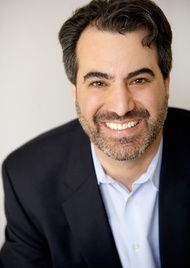By: Ron Pernick

For the past 15 years I’ve been honored to lead the charge at Clean Edge, the clean-tech research firm I cofounded back in November of 2000. It’s hard to believe it’s been one and a half decades since we incorporated the firm, and even more mind-boggling to consider the dramatic changes experienced by the industry during this timeframe.
As a company, we’ve achieved much of what we set out to do at the beginning of the new century. (At the time, a Google search for “clean tech” or “cleantech” yielded only a few relevant results. Today, a similar search yields more than 4 million – demonstrating just how far the sector has come.) Some of these milestones are familiar to those who have been following our firm’s activities, while others are perhaps less well known. These include:
- Publishing Clean Tech: Profits and Potential, the first report making the economic case for clean tech, back in 2001
- Writing (with Clean Edge’s Clint Wilder) The Clean Tech Revolution, the first business book to highlight the emerging opportunities in solar, wind, energy efficiency, advanced transportation, water, and other markets
- Developing multiple stock indexes tracking clean-tech companies and activities
- Releasing our second book, Clean Tech Nation
- Tracking the activities of states and metro regions with our U.S. Clean Tech Leadership Index
During the same 15-year period, renewable energy technologies have gone from fledgling to mainstream. The global solar and wind industries have expanded from a combined $6.3 billion market in 2000 to nearly $200 billion last year. Costs for solar have fallen by 75%, from an average global system price of around $10 peak watt installed in 2000 to around $2.50 today. And in 2014, solar and wind power represented more than half of all new electricity capacity additions in the U.S. Talk about a turning tide.
Our 15-year anniversary is a great time for reflection, but also a great time to look ahead. I’m excited to introduce some changes at Clean Edge and tell you a bit about plans for our course forward. Today, we officially release our new logo and tagline, to better reflect where we see the industry going, and our company’s role in it.

It’s not a drastic change, but our new logo and tagline reflect our effort to hone our work in a dynamic and rapidly changing industry. Our new tagline goes from the previously very broad – The Clean Tech Market Authority – to a more specific focused mission: Indexing the Clean Energy Economy. Indexing encompasses our stock indexes and all of the benchmarking work we do in tracking the clean-tech activities and performance of companies, governments, utilities, consumers, and other key stakeholders as we transition to a clean-energy economy.
Some may note that we have replaced clean tech with clean energy. While we remain committed to the broader clean-tech marketplace, we are focusing our efforts more on the energy portion of the clean-tech equation. This is still a very comprehensive and wide-ranging arena, including renewable energy resources, energy storage, green and net zero buildings, energy efficiency, grid optimization, and advanced transportation.
Moving forward, what will the next 15 years bring? We expect energy storage markets to expand significantly as the industry experiences cost declines similar to the past decade for solar PV. Net-zero and nearly zero-energy buildings will become the norm for new construction. All-electric vehicles, and increasingly autonomous ones at that, will reshape the transportation landscape. Urban-located vertical farms will become an integral part of our food system. Cost-competitive solar and wind will enable many locations to reach their goals of 100% renewables. The list goes on and on.
At Clean Edge, we plan to do more convening – opening dialogue among disrupters, utilities, investors, governments, corporates, and other stakeholders at the forefront of the shift to mass clean-energy deployment. And of course, our future will include more indexing and benchmarking services, tracking best practices and shining a light on key innovations among policymakers, the capital markets, and companies.
As part of this effort, we are excited to be:
- Unveiling, later this month, a report benchmarking the activities of corporations and governments as they move to 100% renewable electricity (along with two webinars on the topic)
- Assisting the Gridwise Alliance with their annual Grid Modernization Index, with a planned Q1 2016 release
- Working with Ceres to put the finishing touches on the next edition of the Benchmarking Utility Clean Energy Deployment report
- Releasing the third annual edition of U.S. Homeowners on Clean Energy: A National Survey (a co-production with SolarCity)
- Issuing the seventh annual U.S. Clean Tech Leadership Index tracking all 50 states and the 50 largest metro regions.
For me personally, I’ve never been more excited or motivated by the changes at hand. Clearly, our thesis from 15 years ago – that clean tech would become a dominant and mainstream economic force – has gained solid footing. But this isn’t about patting ourselves on the back for seeing and chronicling a trend. Instead I have my eyes set not on the past, but the future. I’ve always seen this transition, to a world powered by clean, renewable resources and deep energy efficiency, as the most important challenge of our time. As we move forward I’m hopeful, while also understanding how massive the challenges are. Indeed, the next decade and a half will determine just what type of world we leave ourselves, our children, and future generations.
______________________________________________________
Ron Pernick is founder and managing director of research and advisory firm Clean Edge and the coauthor of two books on clean-tech business trends and innovation, Clean Tech Nation (HarperCollins, 2012) and The Clean Tech Revolution (HarperCollins, 2007).
Information contained in this article is not intended to be investment advice or used as a guide to investing.

